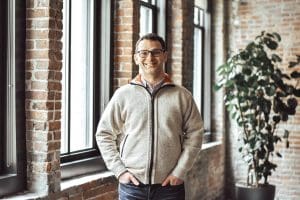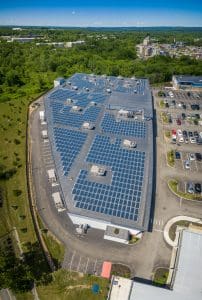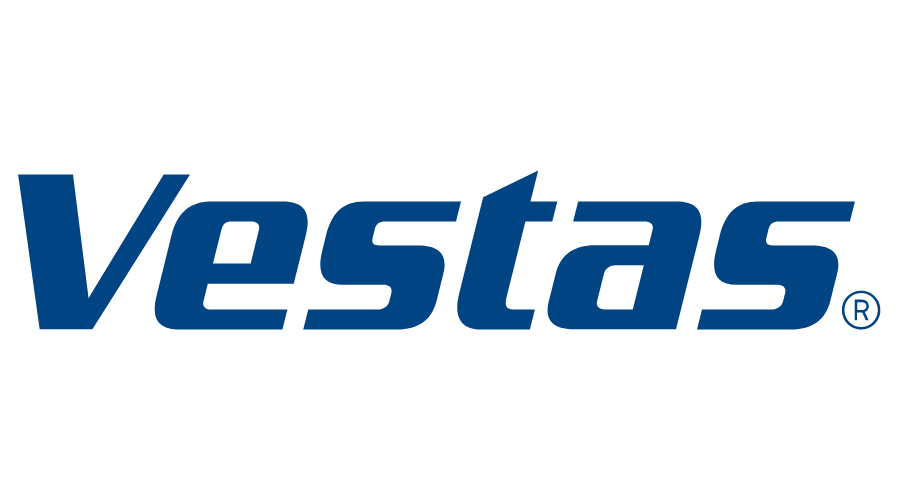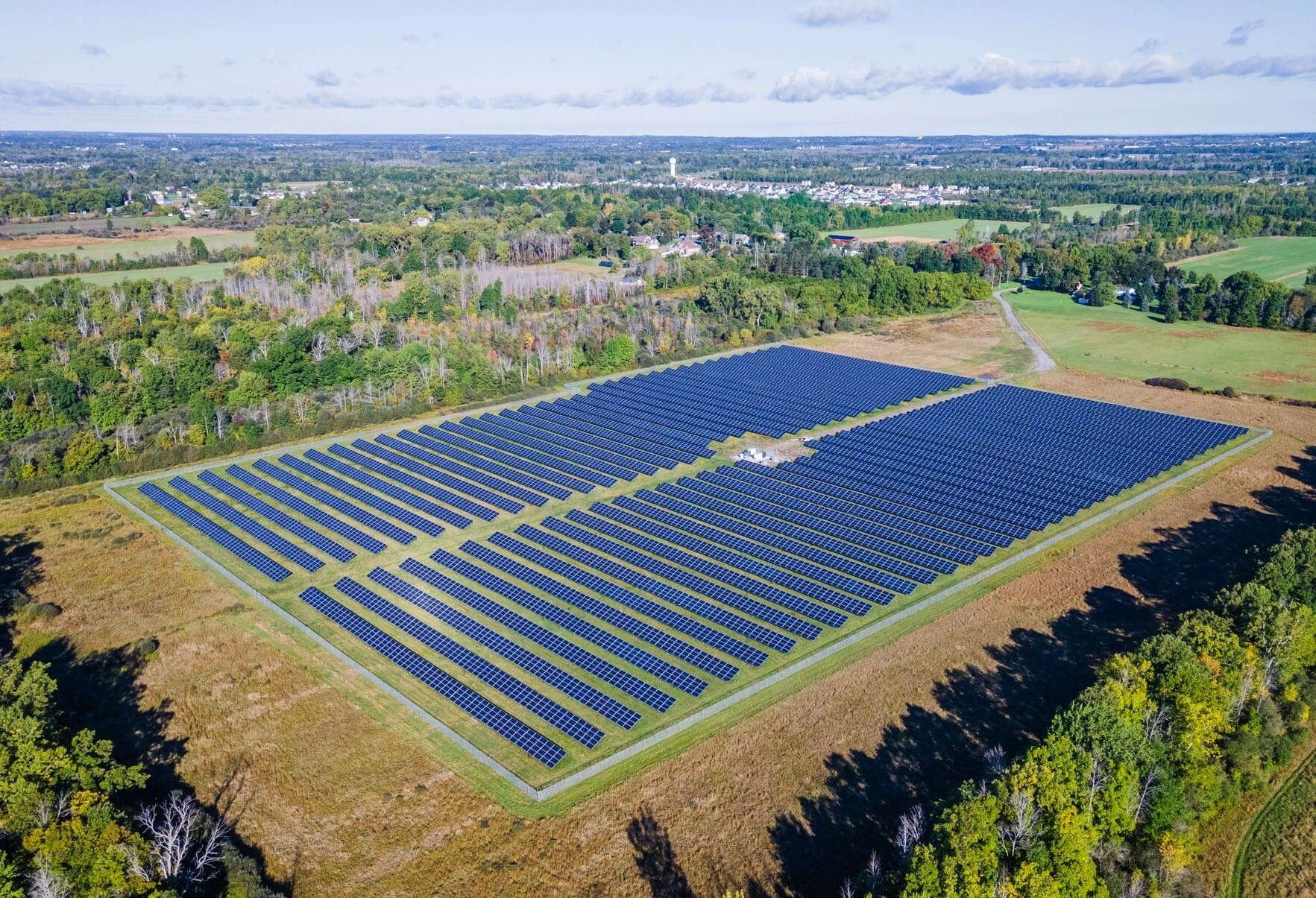
Nexamp, one of the leading renewable energy generators and community solar providers in the United States, recently closed a US$440 million senior secured credit facility for a 380-MW portfolio of solar and energy storage assets. The debt financing, announced in March, will be used to fund nearly 100 community solar projects across five states and includes energy storage capacity totaling 120 MWh. Combined, these projects will offset more than 366,000 tons of carbon dioxide (CO2) each year for the next 25 years.
Nexamp’s Roots
Nexamp was founded in 2007 by two military veterans who wanted to provide green energy solutions to commercial and industrial enterprises in their home state of Massachusetts. The plan was to provide vertically integrated solar photovoltaic (PV), solar thermal, micro-wind, geothermal, efficient lighting, and commercial energy efficiency modeling. After about five years of offering a wide variety of services, Nexamp realized it needed a niche. It shifted from development to owning and managing assets. “The shift was important because one of the pain points we saw in the value chain was that there were too many stakeholders,” said Zaid Ashai, CEO of Nexamp. “This created complexity and a lot of soft costs for the customer without delivering better quality. We wanted to make sure we had a holistic approach to delivering solar energy in a cost-effective manner.”

Over the last five years, Nexamp has rapidly expanded its infrastructure to further benefit residential customers, small businesses, and corporate consumers with leading community solar offerings. “The industry will continue to change over the next five to 10 years,” said Ashai. “So, we’re not just a community solar company by any means. We’re focused on solar and storage at this point and we a have a broad plan to expand on several fronts. One is geographically. We’re in about 15 states right now but expect to be in more states in the US community solar market. I think you’re going to see more and more storage come online throughout the country due to the increase in usage of wind and solar and the intermittency associated with it. So, we’ll continue to invest in standalone storage projects. Lastly, we have an exciting product roadmap for consumers. We’re always getting asked by our customers about ways to save money and reduce their carbon footprint. Community solar has been a good foundation to create value for these customers. Over time, we plan to build a much deeper product roadmap. Hopefully, we are going to start announcing this roadmap and the products involved later this year.”
The Benefits Of Community Solar
The solar market has a lot of nuance, but it can be divided into three basic categories: rooftop solar, community solar, and utility-scale solar. Rooftop solar typically involves high upfront costs, but also grants the buyer access to their own electricity. Utility-scale solar is a great option for regions with the climates necessary to support large solar farms (think Florida and California). With scale, utility providers can reduce costs and provide renewable energy for their customers. Community solar is one of the more unique options because it combines a little bit of rooftop solar with utility-scale solar. With no upfront costs or long-term contracts, community solar is a great option for households that may not have the rooftops necessary to support solar panels, and that don’t have a viable solar provider.

According to Nexamp, community solar is the most logical option for many areas in the United States and abroad. “Community solar is designed to create broader access to the benefits of solar,” said Ashai. “Community solar creates a business model where larger solar power plants can be built, and then residential customers, small businesses, even some large businesses can connect to those facilities and enjoy the benefits from solar. You don’t have to be a homeowner, you could even be a renter, for example. The pool of available buyers for community solar is infinitely larger than the residential solar market.”
The Process Of Investing In New Communities
As mentioned, Nexamp’s latest round of funding increased the company’s exposure to around 15 US states, from Hawaii in the west to Maine in the east. Each state has different nuance, renewable policies, and regulatory hurdles. “The programs are designed differently based on who can subscribe to the facility,” said Ashai. “Can businesses subscribe? When can you replace customers? How would it be reflected on a utility bill? Things like that. So, every state is different.”
Nexamp considers a number of factors when scanning the horizon for new projects. One of the baseline requirements is proximity to the necessary infrastructure of the energy grid. “We look for where we can site the project from a land and grid basis,” said Ashai. “Once we are able to do that and develop the power plant, we start looking at the customers. The customers aren’t literally connecting to these power plants, they’re already tied to the grid. Our power is tied into the grid, but the meter at the community solar facility (the credits) are distributed based on contracts with those customers. That’s the framework that we’re under these days. Once we have a power plant that has gone through the major permitting process, say here in Massachusetts or New York, we have a customer acquisition and management department that reaches out to customers through digital media, social media, direct mail, community partnerships, etc. That way, they are able to subscribe to the power plants. The number of potential customers is fixed based on the power plant’s generating capacity.”
Community Solar On A National Scale
With a focus on vertically integrated community solar, Nexamp can now use the US$440 million credit facility as dry powder to grow its business even further. Nexamp’s customers may benefit from a lack of up-front fees, credit checks, installation fees, and long-term commitments. But Nexamp needs access to new capital to continue to scale. Developing, acquiring, building, owning, and operating solar and storage for 25,000 homes and businesses is a costly endeavor. With an addition of 300 new solar and storage projects in the pipeline, Nexamp will use this round of financing to make these projects come to fruition.
In addition to the high dollar value of the credit facility, it’s worth mentioning the level of sophistication that the investor consortium brings to the table. MUFG Union Bank, N.A. served as the coordinating lead arranger for the syndicated financing, which included participation from an expansive group of market-leading lenders. “The strong lender interest in response to this portfolio demonstrates the momentum behind the renewable energy industry and is a clear validation of Nexamp’s approach,” said Peter Tawczynski, CFO of Nexamp. “As we bolster our solar portfolio with energy storage solutions, we look forward to launching new products in more geographies and delivering savings to our expanding customer base.”

To Ashai, the fact that the syndicate includes many tier-one banks shows that financial institutions are excited about investing in community solar. “The investment is a strong validation marker for the whole industry, which we’re proud to be a part of,” said Ashai. “It shows that there is not only ESG capital, but also non-ESG capital that is willing to invest in new or emerging business models in the United States as we rebuild our energy infrastructure. It is nice to be part of the largest community solar debt financing in the United States. My hope is that number is going to get even higher pretty soon. We’re an important solution in the solar landscape, but in a broader sense, we’re part of a movement to address the climate crisis we’re in.”
Opportunities Outside Of Solar Power Generation
Renewable energy is unique in that it’s a four-way intersection between the technology, energy, transportation, and industrial economies. In many ways, companies that are able to tap into this intersection instead of just one industry stand a better chance at achieving long-term growth.
The trajectory of community solar is surging in lockstep with an accelerated interest in electric vehicles (EVs). In April, Toyota unveiled its new electric SUV, the bZ4X, at the Shanghai Motor Show, modeling the new EV after its popular RAV4. Toyota plans to introduce 70 EVs globally by 2025, 15 of which will be dedicated to battery electric vehicles (BEVs). The bZ4X will begin production in China and Japan with plans to sell worldwide by 2022. Lamborghini followed suit in May with its 10-year sustainability path, dubbed “Cor Tauri,” a reference to Lamborghini’s bull logo. Not to be outdone, Ford dropped an absolute bomb with the F-150 Lightning, which comes in Platinum, Lariat, and XLT. The new all-electric models will be available starting in spring of 2022. These announcements come on top of continued growth by established players like Tesla and GM. EV adoption may be growing, but many basic models still have limited range and take a long time to charge. One of the more interesting growth markets is for solar-powered at-home charging stations, which could provide overnight clean energy to EVs. “We definitely discussed EV charging,” said Ashai. “There are no immediate plans for us to get into it. It’s obviously a quickly growing market with a number of good players in it. We’re still thinking through what our role would be in that marketplace. I don’t think we’ve come to a definitive conclusion on what our value add would be for customers at this point. We have different ideas around it. I think the challenge with this market is that the penetration of EVs in the United States is still relatively modest. There needs to be a lot more growth to make this a sort of robust business model where companies like Nexamp can invest in research and development [R&D] to be part of that ecosystem.”
Growing The Business
Instead of getting sidetracked by EVs and other capital-intensive opportunities, Nexamp is keen on growing its moat and securing its industry-leading position in US community solar. The company’s subscription model provides predictable cash flows that can help with financial modeling and forecasting. The strategy provides a compelling value proposition for both Nexamp’s customers and its investors, although the company still needs to prove it can achieve consistent profitability despite seasonality in the solar industry.

Over the last seven years, Nexamp has grown its team from 40 to a little under 300 people based out of Boston. “From a business model standpoint, we generate value by owning solar facilities that are generating energy,” said Ashai. “In addition, we create value by doing project development, servicing community solar customers, acquiring community solar customers, and by acting as an engineering, procurement, and construction [EPC] player as well. We have different revenue streams within our business model, which has been helpful in creating value for our customers and our shareholders. From a customer’s perspective, it’s ideal because the leakage of soft cost to lots of third parties goes away with our business model. From a shareholder perspective, those savings create a more profitable, sustainable corporate entity.”
Nexamp differentiates itself from other companies in its space by acting as a leader throughout the solar value chain. “A lot of our peers are really just focused on development aspect,” said Ashai. “For us, it’s a much broader vision. Not only development expertise, which is very important, but also customer engagement. We have a venture laboratory within Nexamp which we call SparkLab, where different team members get to present new ideas. These ideas don’t have to be solar. They could be EV charging, recycling, wastewater, among others. We pick the best ideas based on how quickly they can build a minimally viable product. Our business will continue to evolve as energy evolves in this country. For us, it’s not just about growing the top line, it’s also making sure we invest in that R&D pipeline for the future. This is something our management team takes very seriously.”
The COVID-19 Pandemic’s Role In the Climate Crisis
March 13, 2020 was the last day Ashai and his team were all in the office together. Today, the Nexamp team is slowly returning to normal, but at the time, they had no idea of the scale and magnitude of the pandemic. “Internally, the first thing we did was look at how can we support our communities,” said Ashai. “As owners of community solar farms, we’re there for the life of these projects. We are not here to build a power plant and leave communities.” Nexamp used its resources to procure N95 masks, gloves, hand sanitizer, and other items. It then looked at its business model to gauge what impact the pandemic would have over the long-term.
Interestingly enough, solar was one of the few industries that actually grew in 2020. In fact, it was the best performing subsector of the US stock market, with the average stock in the Invesco Solar exchange traded fund (ETF) increasing more than 230% in value in 2020 alone. Similarly, Nexamp was able to grow its top line by roughly 30% in 2020 despite COVID-19 challenges. “I think the pandemic illustrated how important the environment is,” said Ashai. “People started seeing how nature could recover when things were shut down. I think energy became a topic. It wasn’t the primary topic obviously, but energy became a much more interesting topic. Landowners and property owners were looking to create value. Solar is a great way to rebuild land, especially given that contractors that specialize in electrical or civil engineering were looking for work. These ended up being supporting factors to help revitalize the solar industry. Over the next two decades, our thirst for electricity is only going to increase. And the reason being is that transportation is going to be rapidly electrified. California, New York, Massachusetts, and other states are looking to electrify public transportation fleets. As that happens, the demand for electricity will exponentially increase. This puts a higher burden the energy industry to make sure we have enough generation to fuel people in the transportation sector. That’s the challenge at the hand. I think we’re excited that distributed solar generation will be a strong part of that.”
A Glimpse Into The Energy Economy Of Tomorrow
Ashai and his team are grateful for experiencing the growth they did during a year when so many other businesses were hurting. The combination of COVID-19 relief bills and the bipartisan infrastructure bill provide momentum for the solar industry to continue to grow. However, one of the key questions will be how much of this growth benefits community solar and how much of it goes toward utility-scale solar? Nexamp sees other sources of renewable energy like wind and hydroelectric, as well as other methods of solar like rooftop and utility-scale not as competitors, but more as complements to its business.
“I think there’s two different visions of the world,” said Ashai. “One vision is a central power plant model where we just a build massive power plants, whether they be solar and wind, and do it the same way we did energy for the last century. I think there’s a lot of pitfalls with that system, including cost, resiliency, not distributing benefits equitably, and permitting power plants in black and brown neighborhoods consistently. The second model is a more distributed and intelligent network. Power is generated much closer to the communities, which provides cheaper transmission, is more dynamic, more resilient, and provides more benefits at the local level. For me, that’s going to be the policy battle that we’re under. I think in 20 or 30 years, established energy companies will replace their businesses with clean energy. I think new companies like Nexamp will displace these traditional incumbents and build new business models that give more energy access and equity to brown and black communities. I think these companies won’t put all the externalities of energy in those communities. We can do something in a whole new way that we’ve never experienced with energy in last century. That’s the challenge we’re facing. I view utility-scale solar and wind as complementary. Do I think it’s the sole solution? Absolutely not. I think consumer engagement is going to be absolutely critical because as a country, we value every citizen’s agency. Lastly, I would say utilities are not going to be on the cutting edge of energy access. They’re not going to be on the cutting edge of building dynamic power plants. They’re slow. I think allowing a competitive atmosphere with distributed models and multiple technologies like wind and solar, storage, and geothermal is going to be a better path for the country.”
Combatting Entrenched Views
Nexamp’s view of the future energy economy is likely to be met with contention and opposing views. However, Ashai was clear to note that he is not necessarily against established utilities. Rather, he’s against denial. Denial that renewables can work together with fossil fuels. Denial that renewables are now cost-competitive with fossil fuels. And against the idea that the energy economy of tomorrow has to look exactly as it has always looked. “As a company, we cheer on everyone’s success in the clean energy industry,” said Ashai. “Our competition is the majors, it’s the traditional energy incumbents, and it’s their reluctance in spite of all the evidence of the impact of climate change and other environmental externalities to adopt better climate solutions. We’re also bumping heads with utilities who are concerned that their business models will have to change with distributed generation. They will have to create a more modern grid. They’ll have to be open to a more intelligent grid. That’s another barrier. As with any industry that’s going through rapid transformation, such as the telecommunications industry several decades ago, there will be incumbents that will hold on to last thread before they change.”
















